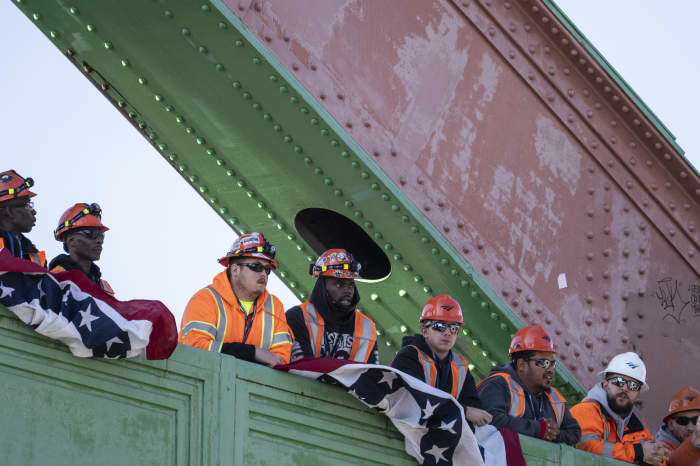The numbers: The U.S. created 209,000 new jobs in June to mark the smallest increase in more than two and a half years, a sign the labor market is cooling off as rising interest rates gradually weaken the economy.
Hiring in May and April were not as strong as originally reported, either.
Economists had forecast a 240,000 increase in new jobs, according to a Wall Street Journal survey.
The unemployment rate, meanwhile, dipped to 3.6% from 3.7%, the government said Friday.
The softer employment report could mollify senior officials at the Federal Reserve, who want hiring and economic growth to slow to help them bring down high inflation.
Yet it might not be enough to forestall a further increase in interest rates, especially with wages rising rapidly and adding to inflationary pressures.

Workers in Baltimore. The U.S. added 209,000 new jobs in June.
Getty Images
Hourly pay rose a sharp 0.4% in June — higher than expected — and left the increase over the past year at 4.4%. Wages were rising less than 3% a year before the pandemic.
The Fed is widely expected to raise rates later this month as it seeks to restore inflation to pre-pandemic levels of 2% or less. Inflation has been stuck in the 4% to 5% range.
Higher borrowing costs reduce inflation by slowing the economy, but they also raise the risk of recession.
Key details: The increase in hiring in June was even weaker than it seemed. Some 30% of the new jobs created last month were in government.
The private sector added just 149,000 jobs, mostly in health care and private education.
Employment fell in retail, transportation, wholesale and temp jobs.
Employment gains in May and April were also marked down by a combined 110,000.
Job gains in May were lowered to 306,000 from 339,000. And the increase in employment in April was slashed to 217,000 from 294,000.
One bright spot: The share of people working or looking for work stayed at a post-pandemic high of 62.6%.
High labor-force participation can also help to reduce inflation. When more people look for work, companies don’t have to raise wages as much to obtain labor.
Big picture: The economy has been defying expectations and still appears to be expanding at a brisk pace.
The bad news? The Fed is primed to keep raising rates until the economy slows even further and the central bank is convinced high inflation is going away. It’s going to take a few more soft jobs reports to persuade the Fed.
Market reaction: The Dow Jones Industrial Average DJIA, -1.07% and S&P 500 SPX, -0.79% were set to open lower. The yield on the 10-year Treasury BX:TMUBMUSD10Y inched up to 4.4% after the jobs report.
